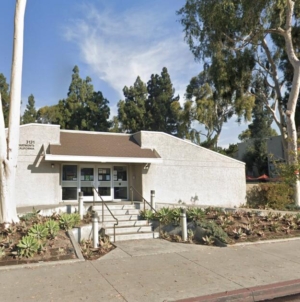-
Police investigating death of ‘full-term infant’ found near USC campus - 20 mins ago
-
Two Earthquakes Strike the Coast of Oregon Today: What to Know - 22 mins ago
-
Nvidia becomes the world’s first $5 trillion company, buoyed by AI boom - 23 mins ago
-
New Study Proposes Advanced Air Quality Assessment to Protect Public Health - 33 mins ago
-
Trey Yesavage’s Unusual Arm Angle Has Given Blue Jays Rookie An Advantage - 45 mins ago
-
World used record amount of fossil fuels last year, scientists say - 59 mins ago
-
China Tries To Cover Up Toxic Mining Disaster: WSJ - about 1 hour ago
-
Stray Cats cancel fall tour due to Brian Setzer’s ‘serious illness’ - about 1 hour ago
-
Must Watch: Recirquel’s Walk My World Brings to Budapest an Immersive Circus Experience - about 1 hour ago
-
2025 NFL Week 9 Buzz: Bears Add DB Who Had 6 INTs Last Season; Vikings Add QB - about 1 hour ago
Report asks why LAPD mental health specialists defer to armed officers
A new report from the city controller’s office questions the effectiveness of the LAPD’s signature crisis response program, saying clinicians trained in de-escalation too often are forced to defer to armed patrol officers.
For years, Los Angeles Police Department officials have touted the success of the Systemwide Mental Assessment Response Team, or SMART. But critics say the program, which pairs licensed specialists with officers in unmarked cars, is failing in the crucial initial minutes of encounters when multiple police shootings of mentally ill people have occurred.
Dinah M. Manning, chief of strategic initiatives and senior advisor in the controller’s office, said the report found an “inherent contradiction” in the SMART program.
Even though its purpose is to send in clinicians and tap their expertise to avoid killings, LAPD policy still requires armed patrol officers to clear a scene of any potential threats beforehand.
Traditional police units almost always take charge, even on calls in which no weapon is involved, such as a person threatening to commit suicide, Manning said.
Referring to SMART as a co-response program “is pretty much a misnomer in this case,” she said. “How is it that we’re ending up with so many fatalities?”
An LAPD spokesperson declined to comment in response to questions about the report.
LAPD officers have opened fire 35 times this year; in recent years, department statistics showed at least a third of all police shootings involved someone with obvious signs of emotional distress.
The report pointed to other shortcomings with the SMART program, which is housed within the department’s Mental Health Unit. Officers detailed to the units receive no specialized training, the report said, also finding that the department has failed to properly track uses of force on mental health-related calls.
The department’s existing use of force policy “falls short” of best practices for dealing with people in mental distress, the controller’s report said. The LAPD’s policy, it said, “only makes cursory mention of ‘vulnerable populations’ without expounding on the dynamic realities presented in encounters with people who have a mental health condition or appear to be in a mental health crisis.”
Too often in cases in which SMART responds, the report said, the outcome is that the person in crisis is placed on an involuntary 72-hour hold. Such scenarios do not involve an arrest or criminal charges; instead the person is held under state law that allows for detention if a person poses a threat to themselves or others.
The controller’s report comes amid a continued debate in L.A. and elsewhere about how officials should respond to emergencies involving mental health, homelessness, substance use or minor traffic incidents.
The city has expanded its alternative programs in recent years, but proponents warn that looming cuts in federal spending for social safety net programs under the Trump administration could hinder efforts to scale up and have more impact.
LAPD leaders in the past offered support of such programs, while cautioning that any call has the potential to quickly spiral into violence, necessitating the presence of officers.
Source link































